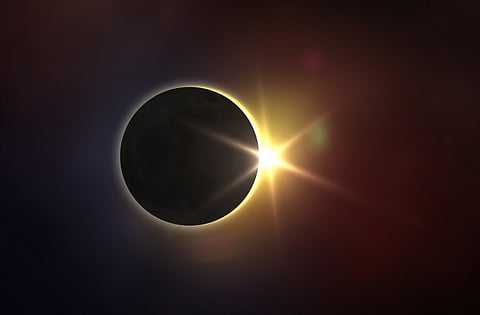
- Destinations
- Experiences
- Stay
- What's new
- Celebrating People
- Responsible Tourism
- CampaignsCampaigns
- Subscribe
- Buy Now

As winter comes to an end, the fog, mist, and smog clear up, and the sky becomes clearer for skygazers to enjoy. In the upcoming month of April, there are several astronomical events to look forward to, including close encounters between various planets and our moon, as well as opportunities to view different parts of our solar system. This is a great time for both amateur and seasoned astronomers to gather under the cosmic canopy, equipped with telescopes and binoculars, and witness the grand celestial spectacle. Keep your eyes on the skies for the coming month, and don't miss out on these exciting events.
The Sombrero Galaxy, documented as M104, can be spotted in the Virgo constellation during the coming weeks. It will be most visible around midnight local time on April 1st and will peak four minutes earlier each day thereafter. The best viewing location is in the southern hemisphere due to its declination of 11°37'S, but it can still be observed from latitudes ranging between 58°N and 81°S. Although it has a relatively faint magnitude of 8.6, the galaxy can still be seen using binoculars or a small telescope, but it is not visible to the naked eye. If you are in New Delhi, you can witness the phenomenon between 8:35 pm and 4:09 am. The event will become accessible at approximately 8:35 pm as it rises to an altitude of 21° above your southeastern horizon.
During the last quarter phase, the Moon rises in the middle of the night and becomes noticeable in the predawn sky. At this point, it is almost perfectly half-illuminated. The Moon's monthly cycle spans the new moon, first quarter, full moon, last quarter, and back to the new moon every 29.5 days, and each phase varies in visibility throughout the day. Specifically, during the last quarter phase, the Moon rises in the middle of the night, reaches its highest point in the sky by dawn, and sets around lunchtime. It will be visible from New Delhi starting at 01:39 until 11:29.
On a certain day, Venus and Neptune will come together and align in the same right ascension, with Venus passing 17 arcminutes to the south of Neptune. Venus, which will shine brightly, will have a magnitude of -3.9, while Neptune will be considerably fainter, with a magnitude of 8.0. Both of these planets will be located in the constellation Pisces. This celestial conjunction will bring the two planets close enough to be observed together through a telescope, and they will also be visible through a pair of binoculars. However, if you are in New Delhi, you may not be able to observe the pair easily, as they will be very close to the Sun, with only a separation of 16° from it.
In April, the Moon and Jupiter will appear to be in the same position as seen from Earth. The Moon will pass by Jupiter at 3 degrees and 59 arcminutes to the north. This will happen when the Moon is just two days old, and they will both be located in the constellation Aries. From New Delhi, this cosmic sight will become visible around 6:59 pm (IST), when it will be 22° above the western horizon. As the sky darkens, the Moon and Jupiter will be easily visible to the naked eye or through a pair of binoculars. They will be too far apart to fit within the field of view of a telescope. The Moon will shine brightly with a magnitude of -9.8, while Jupiter will be noticeably bright with a magnitude of -2.0. After a while, they slowly descend towards the horizon and set around 2 hours and 5 minutes after the Sun at 8:49 pm.
The Whirlpool Galaxy M51 in Canes Venatici will be prominently visible in the evening sky for the next few weeks. On April 14th, it will be at its highest point around midnight local time, with subsequent evenings seeing it culminate four minutes earlier each day. It has a declination of 47 degrees and 11 arcminutes north, which makes it easiest to observe from the northern hemisphere, although it won't be visible from latitudes much below 22 degrees south. Despite its faint magnitude of 8.4, M51 can be observed through a pair of binoculars or a small telescope, but it won't be visible to the naked eye. From New Delhi, it will be visible all night, at around 7:43 pm (IST), 34 degrees above your north-eastern horizon, as dusk fades to darkness. It will reach its highest point in the sky at 12:21 am, 71 degrees above your northern horizon. It will be lost to dawn twilight at around 4:56 am, 34 degrees above your north-western horizon.
